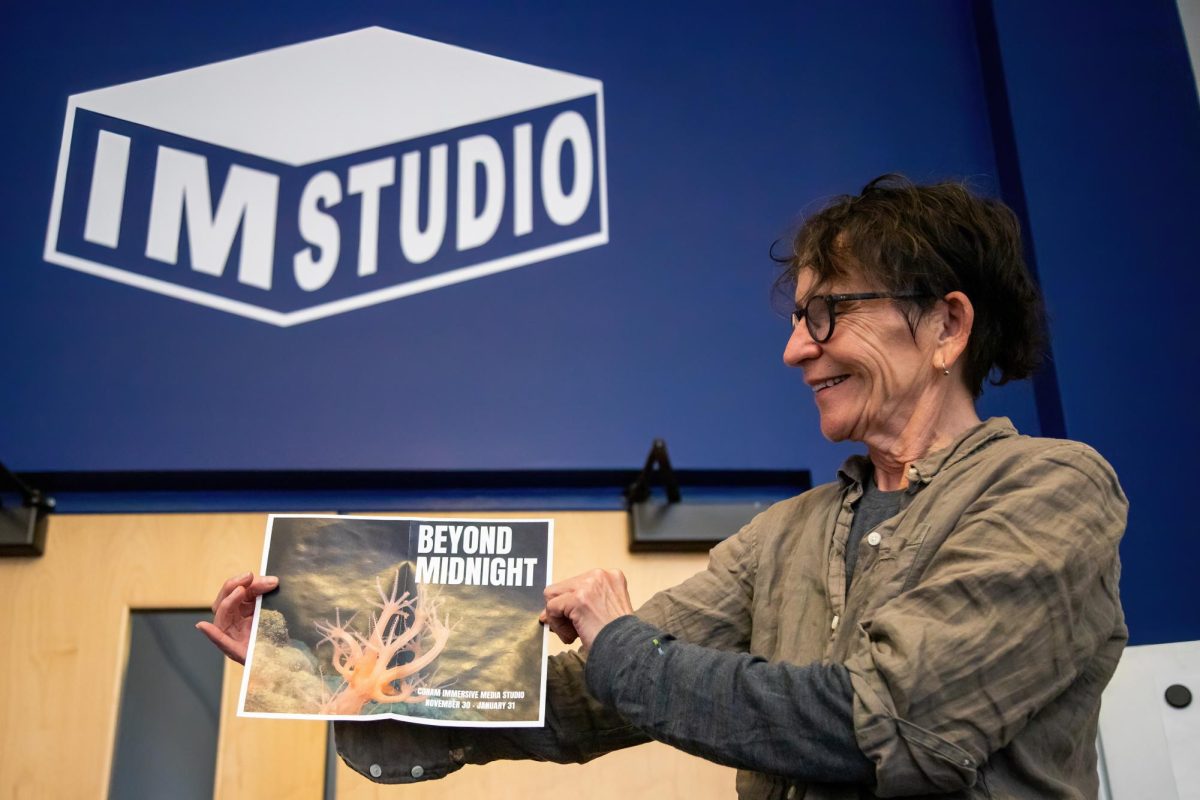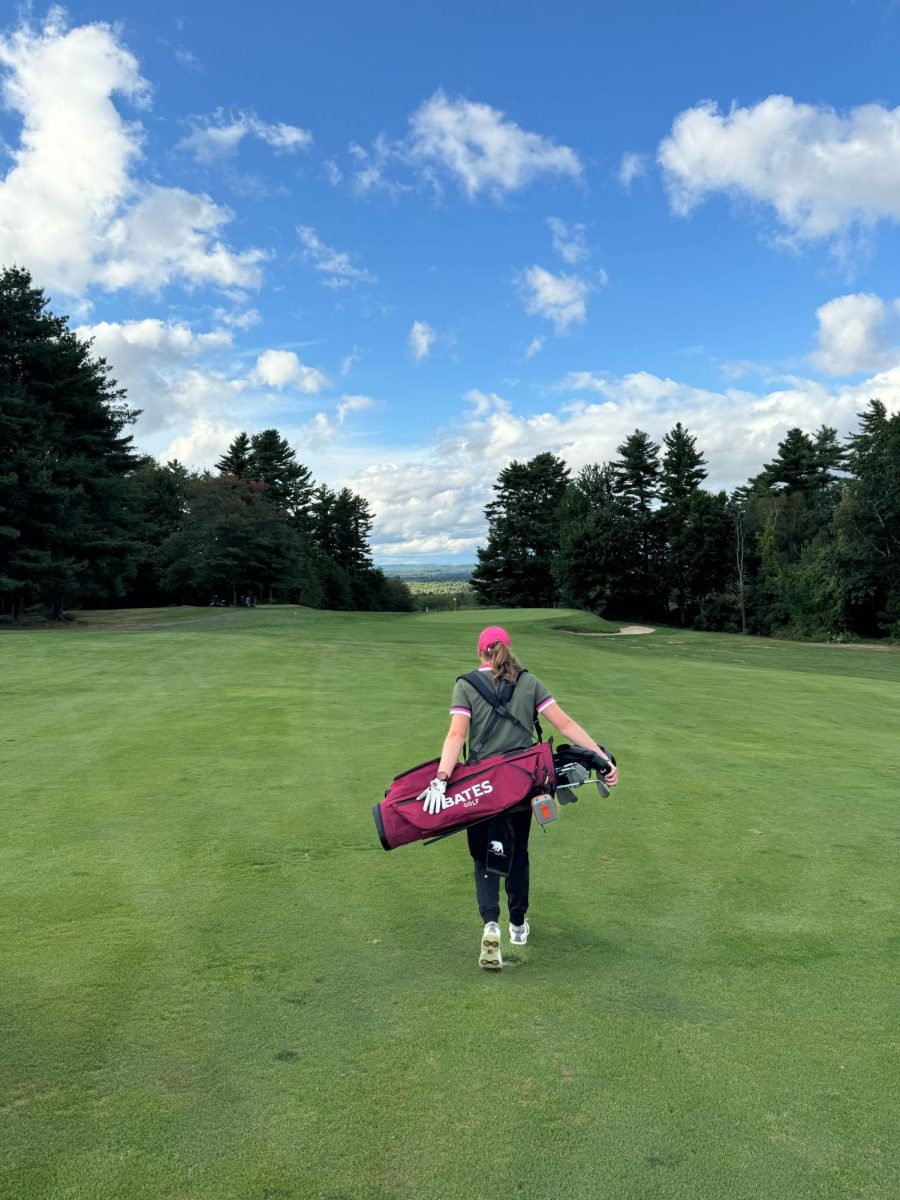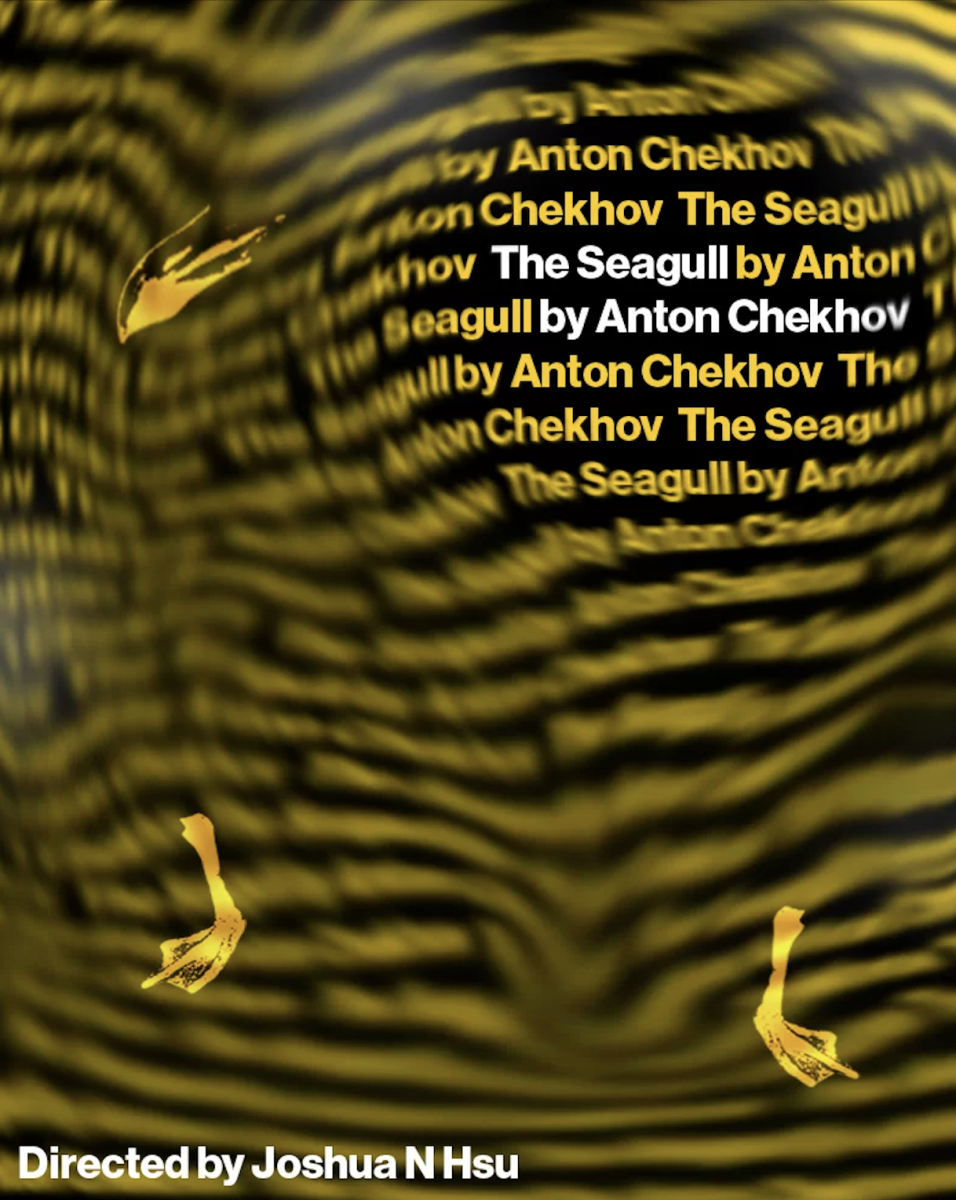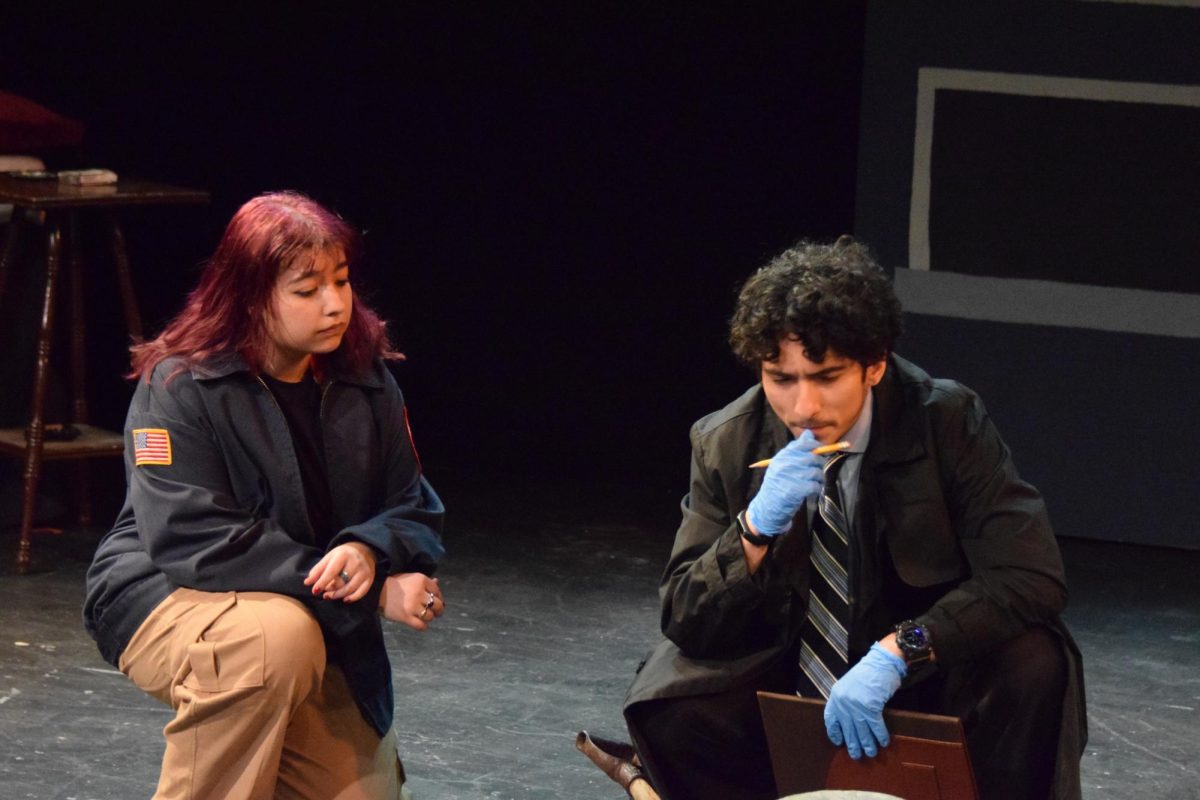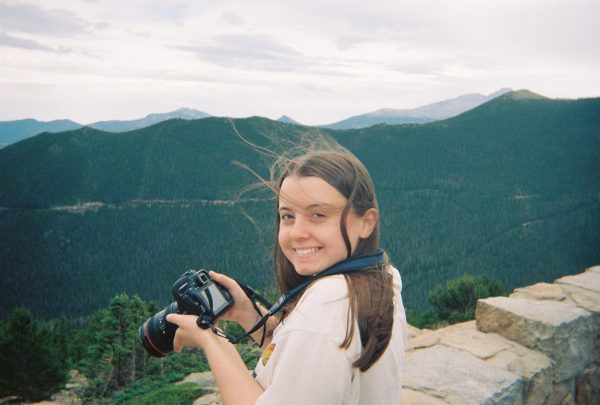The vast majority of humans will never see the ocean floor in their lifetime. And yet, humanity is encroaching upon deep sea ecosystems at an alarming rate.
Threats to these ecosystems include mining, overfishing, carbon-driven climate change, and microplastic pollution. And although it may seem like these ecosystems are too far away to matter to the surface world, the reality is that they are teeming with life that could give us valuable insights into the world around us.
“The deep sea is something that we can’t see, but it’s 85 percent of Earth’s surface,” Bates Visiting Assistant Professor of Arts and Visual Culture Michel Droge said. “The ecosystems that dwell there have an impact on everything else on the planet. They believe the beginning of life was around these hydrothermal vents. There’s ways of understanding these areas that also give us understanding for other planets and other places with extreme climate conditions.”
Still, it’s difficult to get people engaged with protecting an ecosystem they may never see or interact with. Exhibits of real deep sea life are few and far between, requiring immensely expensive equipment to cool and pressurize some exhibits. So, alongside a team of deep sea scientists, Droge set out to create Beyond Midnight, an artistic experience that would connect visitors to a deep sea ecosystem in an intimate and immersive manner.
“By having an exhibit like this, we can raise the awareness of what we know is in the deep sea, and what the ecosystems look like, and do research on them, and then share this awareness with people so that they will connect and hopefully care about conserving these areas,” Droge said.
Ten years ago, University of Calgary marine scientist Dr. Rachel Lauer and her team discovered an “octopus nursery” deep off the coast of Costa Rica. In slightly warmer waters, around 10 degrees Celsius, these octopuses seemed to be thriving despite lower oxygen levels. When Lauer and a new team returned more recently, with Droge and one other artist on board, they discovered at least four new species of octopus and observed the nursery for 28 days through a remotely operated vehicle named Subastian.
While on board, members of the expedition were surrounded by constant livestream of what was happening below.
“The whole time I was on the boat, I kept thinking, ‘I wish these screens were on the floor and on the ceiling, and just surrounding me,’ because that’s what it felt like – I wanted what I was physically immersed in to also look like what I was feeling,” Droge said. “I was really lucky to be constantly inundated with these images because I felt connected to the bottom of the ocean, even though I didn’t physically go down in the submersible. I felt like I was there.”
This experience, Droge said, changed the way they viewed the world.
“When I got back, I had a really hard time adjusting. I had a hard time being on Earth, on solid ground, and dealing with things like driving and just doing things like going to stores to buy groceries, things like that felt really arduous to me,” Droge said. “I stopped taking for granted our cultural effect on the planet.”
After the voyage, Droge had around 70 terabytes – 28 days of 4K footage for 12 hours a day – to work with. They knew they wanted to create something that would replicate what they’d felt offshore and afterwards. With the help of Bates professors Carolina González Valencia, Tristan Koepke, and Asha Tamirisa, they created an exhibit complete with sound, intermittent poetry, and above-water footage.
“When I was on the boat was when I was dreaming up this exhibition,” Droge said. “I was also reading Alexis Pauline Gumbs’ book Undrowned, which is this very poetic book about sea mammals and humans and the connection between them. I was reading that and seeing these creatures and talking with the scientists. And the whole thing felt like it needed to be shared.”
According to Lauer, the ocean absorbs 80 percent of the effects of climate change. Not only is the ocean getting warmer, but it’s also growing more and more acidic from absorbed carbon dioxide, slowly growing inhospitable for marine life. Droge said that for humans to want to protect these ecosystems, we’ll need to bridge the divide between us and nature that we’ve had “for so long.”
“It’s created this binary and this hierarchical kind of relationship that does make it more psychologically impossible to exploit these places,” Droge said. “But if we see ourselves as connected – we are part of these ecosystems, and we depend on them and we are intertwined with them – then, perhaps, hopefully, we will be more careful.”
When I visited Beyond Midnight, surrounded by the sounds of water and projections of octopus, hagfish, echinoderms, and virtually unrecognizable species, I felt a deep sense of peace. But I also felt a deep sense of urgency. Humans, having only explored around five percent of the seafloor, really have no idea what we are damaging with our day-to-day actions. And without exhibits like Beyond Midnight, it’s possible that most people will never understand the ecosystems that are disappearing.
Understanding our world by intertwining science with art, something that is so important to humanity, is vital to protecting and conserving it. Beyond Midnight is a perfect example of how humans can express connection with nature and ecosystems – even if we’re unlikely to ever see them in real life.
“When I first started working with a scientist a couple of years ago, three years ago, my big challenge and the big question I was asking in the studio was, how do I take this very hardcore scientific language and put it through my head and bring it down to my heart and then express something that’s a combination of the two that’s not necessarily illustrating an idea but raising awareness of area with an emotional side to it,” Droge said.
Droge considers Beyond Midnight to be a “work in progress.” They hope the exhibit will travel the world, reaching as many people as possible.
“We exploit animals, we exploit the land, we have this relationship with nature that’s binary,” Droge said. “And I think by sharing exhibitions like this, and sharing the concerns about the ecosystems, that we connect people. And I think connection is a solution.”


